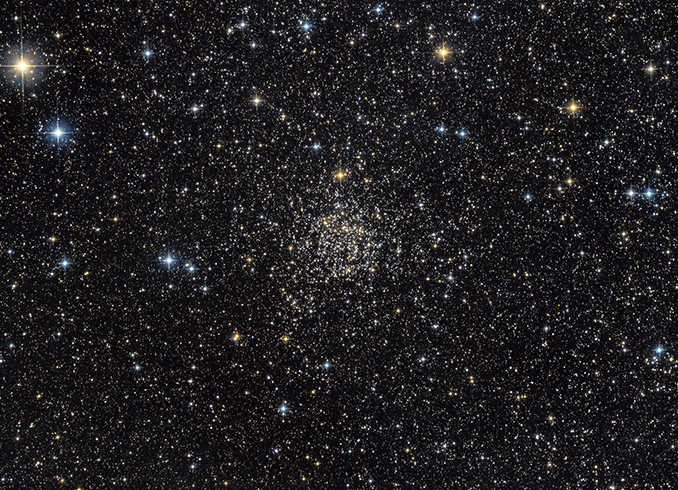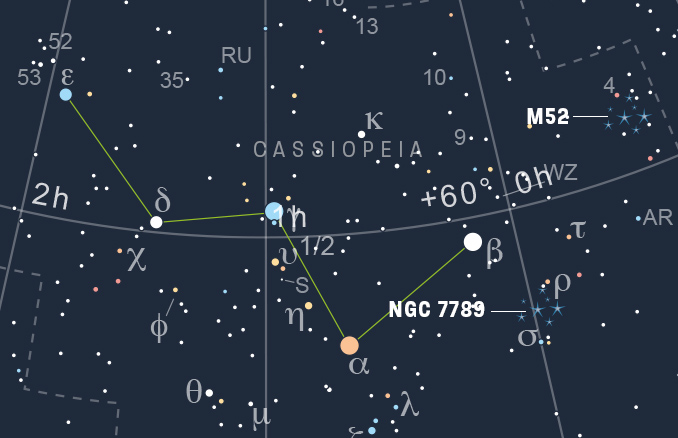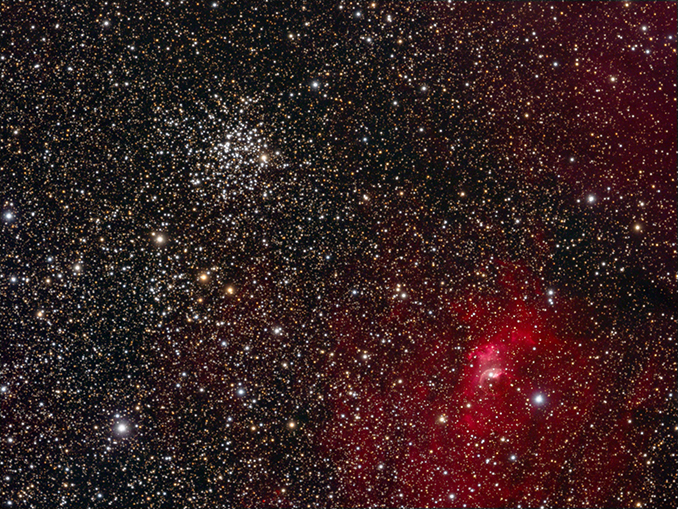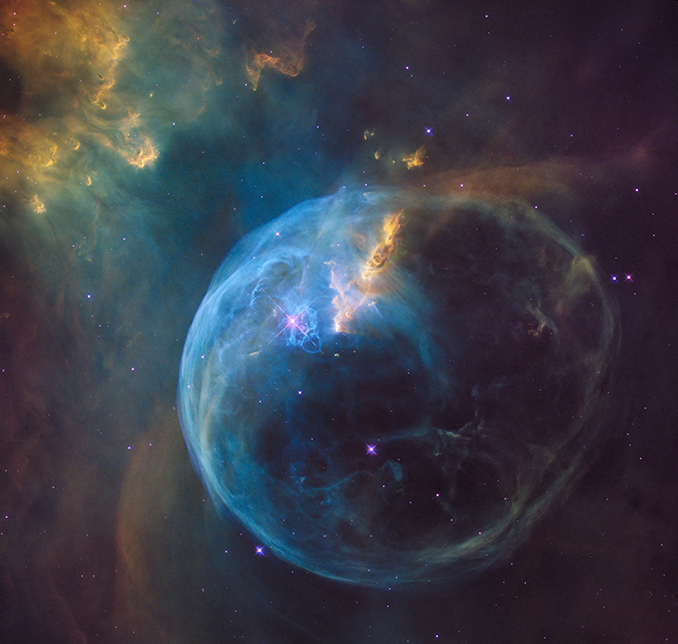
Messier 52 (NGC 7654) and NGC 7789 are two of a trio of great open clusters found in Cassiopeia (the other being NGC 457, the ET, or Owl Cluster), a constellation of the far northern sky that can lay claim to the title ‘the home of open clusters’. Messier 52, after Messier 11 (the Wild Duck Cluster) in Scutum, is perhaps the richest and most dense open cluster in the Messier catalogue, hosting around 6,000 stars. NGC 7789 is a cluster stunner, easy to sweep up in a pair of binoculars and its myriad stars majestically grace the field of view of view of a moderate- to large-aperture telescope. Throughout the autumn both are well placed and easy to find.

How to observe
As Cassiopeia wheels around Polaris (the Pole Star), its location is superbly marked by its familiar ‘W-shaped’ asterism of five bright stars. On the opposite side of the Polaris is another great asterism within a great constellation, the Plough in Ursa Major. Cassiopeia’s ‘W’ spans 13 degrees across its major axis (a fist held at arm’s length covers around 10 degrees across your knuckles), from magnitude +2.27 Caph (beta [β] Cassiopeiae (Cas) in the west to magnitude +3.38 Segin (epsilon [ε] Cas) in the east.

Messier 52: A bubble lives nearby
In late October, nightfall is at about 6pm BST from London. Cassiopeia lies well up in the north-eastern sky (it’s circumpolar [always above the horizon] from the UK). Messier 52 culminates high overhead at about 9pm BST.
Messier 52 is quite easy to track down. First, locate the two brightest and most westerly stars in the ‘W’, magnitude +2.23 Schedar (alpha [α] Cas) and the aforementioned Caph. Then draw an imaginary line between them and extend it eastwards twice as far again to just inside the boundary with Cepheus. Sweeping with binoculars should get you there.
A pair of 10 × 50 binoculars shows Messier 52 as a partially resolved haze, while its appearance is transformed telescopically, with 30 to 50 or so stars resolved across its 13’ form through a 150–200mm (six- to eight-inch) telescope. The cluster’s brightest stars shine at magnitude +8.2 though typically are tenth magnitude, giving it an integrated magnitude of +6.9.
Messier 52’s attraction to visual observers and imagers alike is enhanced by the presence of the remarkable but faint Bubble Nebula (NGC 7635), which lies just over half a degree to its south-east. The Bubble is a seven-light-year-wide spherical object sculpted by the fierce wind from a nearby massive star. To observe this diffuse ring of gas you’ll probably need at least a 250mm (ten-inch) telescope operating under a transparent sky when darker skies return in the autumn.

NGC 7789: Caroline’s Rose blooms brilliant
NGC 7789 was discovered by Caroline Herschel in 1783 and is known as Caroline’s Rose in her honour. It can be located three degrees south-west of magnitude +2.27 Caph (beta [β] Cassiopeiae, the most westerly lying of Cassiopeia’s five brightest stars that form its familiar ‘W’-shaped asterism. Shining with an integrated magnitude of +6.7, a pair of 10 x 50 binoculars easily shows it, even under suburban skies, as a grey haze comfortably framed between fifth-magnitude rho (ρ) and sigma (σ) Cassiopeiae.
NGC 7789 is circumpolar (never setting) from UK shores; it culminates overhead 45 minutes or so after Messier 52. Physically, it’s a rich open cluster that’s one of the oldest known: its member stars are believed to have formed around 1.6 billion years ago. A 100mm (four-inch) telescope reveals around 40 to 50 stars, while looking through the eyepiece of a telescope in the 200–250mm (eight- to ten-inch) class should reveal between 100 and 150 stars scattered across an apparent diameter of around 20 arcminutes.



